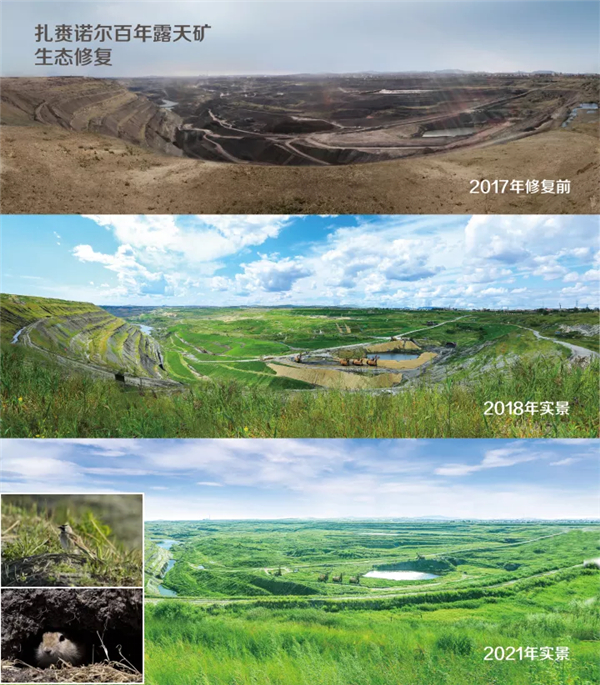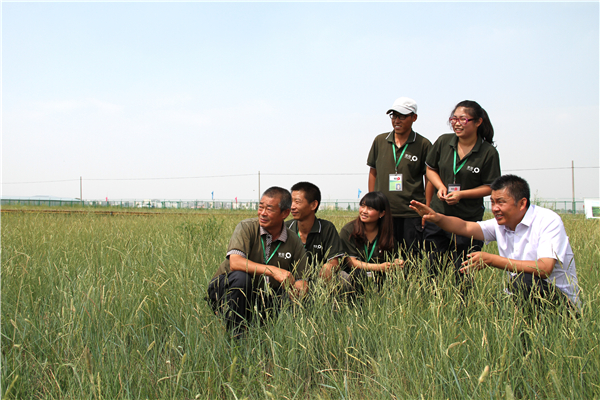Developing grassland carbon sink standards prioritized

An open pit mine area in Manzhouli city in Inner Mongolia autonomous region transforms after local reclamation efforts. [Photo provided to chinadaily.com.cn]
Developing standards for grassland carbon sinks is prioritized in a proposal to be tabled at the upcoming Fifth Session of the 13th National Committee of the Chinese People's Political Consultative Conference, by CPPCC member Wang Zhaoming from North China's Inner Mongolia autonomous region.
A grassland carbon sink is not only an ecological concept, but also involves a transformation of grassland production and the lifestyle, Wang said in a media interview. He will table the proposal at the CPPCC when it kicks off on March 4.
China has a vast grassland area and its grassland carbon sequestration potential is understood to be huge. During the 14th Five-Year Plan period (2021-25), China is set to implement the restoration of 230 million mu (15.33 million hectares) of degraded grassland and it is estimated that about 0.1 metric tons of carbon will be absorbed for each mu of grassland restored.

Wang Zhaoming (in white) investigates the ecological restoration of Chilechuan grassland. [Photo provided to chinadaily.com.cn]
At the moment, there are said to be no grassland carbon standards, so there is no way to calculate and evaluate them.
Wang pointed out that as important ecological assets, grassland carbon sinks provide a stable and long-term benefit for both the country and the local herdsmen.
With regards to grassland ecological protection areas in particular, it is viewed that grassland carbon sinks can become an important part of local finance.
In his proposal, Wang suggested that the government, research institutions and enterprises should join forces to build a national standards system for grassland carbon sinks, calculate the value of grassland carbon sinks and support the development and utilization of grassland carbon sinks.



 Print
Print Mail
Mail


